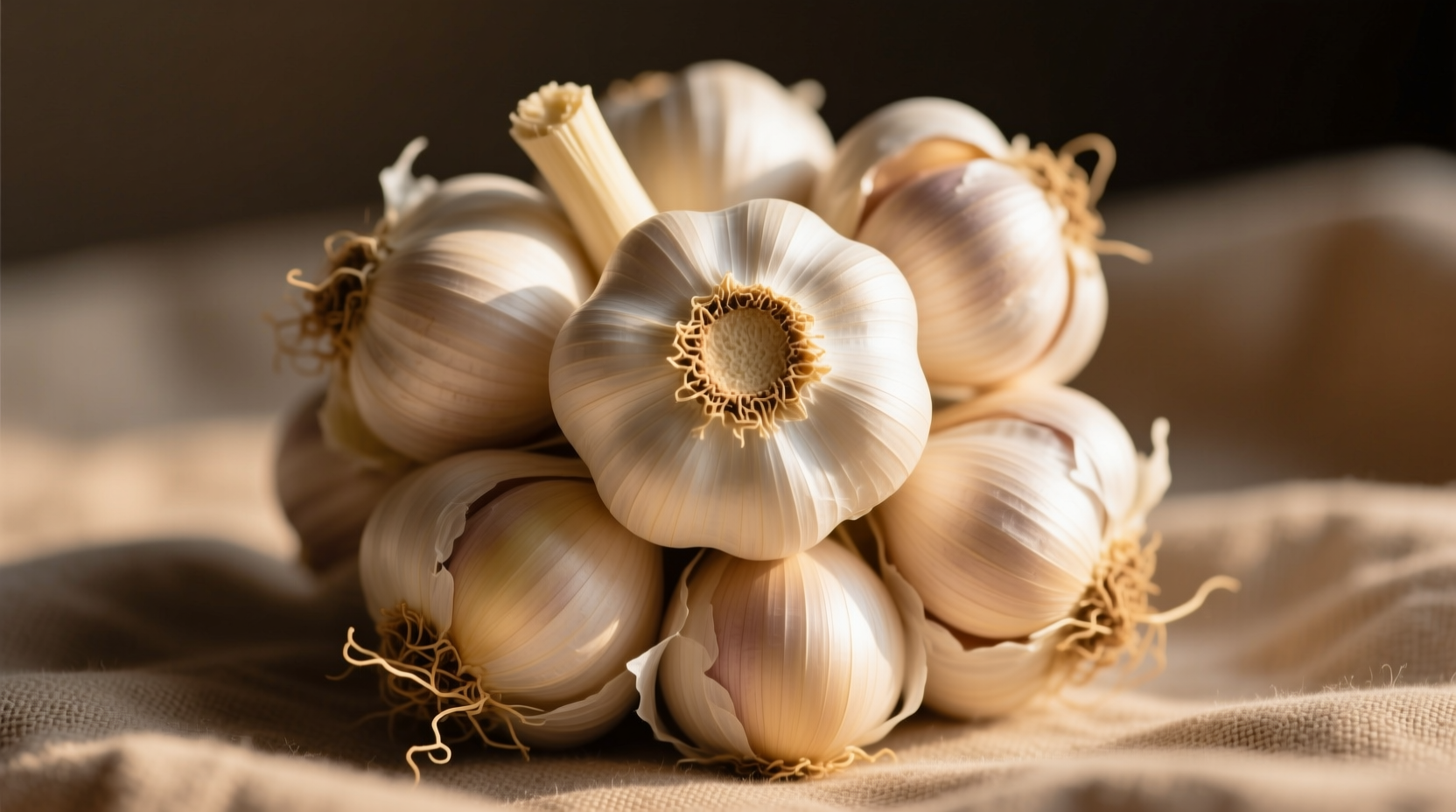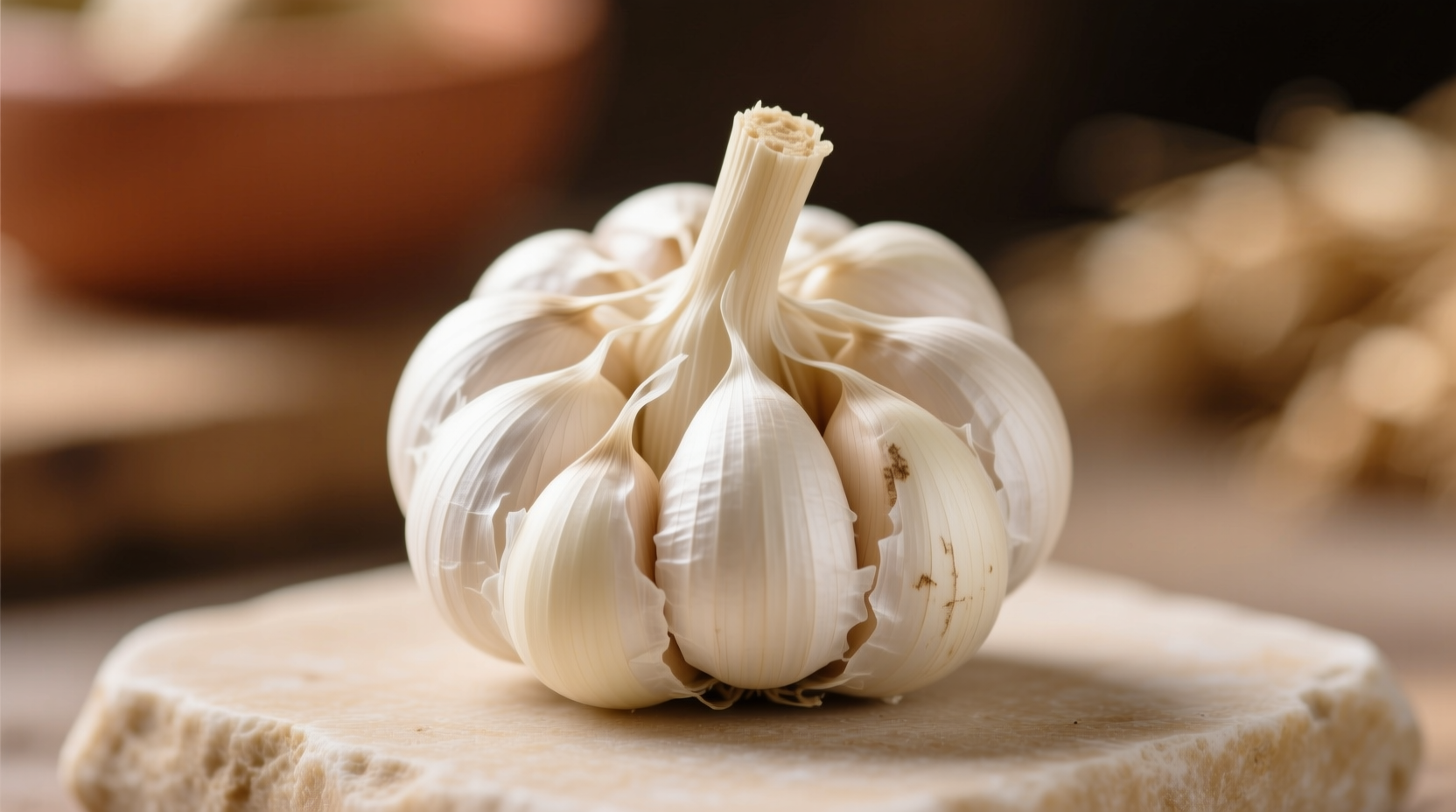A head of garlic refers to the entire bulb, typically containing 10-20 individual cloves wrapped in a papery skin. Properly selected and stored, a whole garlic head maintains freshness for 3-5 weeks at room temperature and offers maximum flavor potential when used in cooking.
What Exactly Is a Head of Garlic?
When you see "head of garlic" in a recipe, it means the complete bulb—not just individual cloves. This fundamental cooking ingredient consists of multiple cloves clustered together, protected by a thin, parchment-like skin. Understanding this basic unit transforms how you approach recipes and grocery shopping.

Selecting Quality Garlic Heads
Choosing the right garlic makes all the difference in your dishes. Follow these professional selection criteria:
- Firmness: Squeeze gently—bulbs should feel solid with no soft spots
- Intact skin: Look for tight, dry, unbroken wrappers
- No sprouting: Avoid heads with green shoots emerging
- Weight: Heavier bulbs indicate higher moisture content and freshness
| Garlic Variety | Flavor Profile | Best Culinary Uses |
|---|---|---|
| Softneck (Artichoke) | Mild, subtle heat | Everyday cooking, sauces, roasting |
| Hardneck (Rocambole) | Complex, robust flavor | Specialty dishes, garlic enthusiasts |
| Silverskin | Strong, pungent | Long-term storage, pickling |
This fact comparison shows why understanding garlic varieties matters. Softneck types dominate supermarket shelves because they store longer, while hardneck varieties offer superior flavor complexity preferred by chefs. According to USDA agricultural data, softneck varieties account for approximately 90% of commercially available garlic in North America due to their extended shelf life.
Optimal Storage Techniques
Proper storage preserves garlic's flavor compounds and prevents premature sprouting. Follow these evidence-based methods:
- Room temperature: Store in a cool, dark, well-ventilated area (60-65°F/15-18°C)
- Avoid refrigeration: Cold temperatures trigger sprouting in whole bulbs
- Never store in oil: Creates risk of botulism without proper acidification
- Separate cloves: Only break off what you'll use immediately
Research from the University of California Cooperative Extension confirms that garlic stored at room temperature in mesh bags maintains quality for 3-5 weeks, while refrigerated bulbs show significantly higher sprouting rates within 10 days. This storage timeline matters because sprouted garlic develops a bitter flavor profile that affects dish quality.
Professional Preparation Methods
Chefs use specific techniques to maximize flavor extraction from whole garlic heads:
Roasting Whole Heads
Roasting transforms pungent raw garlic into sweet, spreadable goodness. Professional method:
- Cut ¼ inch off the top to expose cloves
- Drizzle with olive oil and sprinkle with salt
- Wrap in foil and roast at 400°F (200°C) for 35-40 minutes
- Squeeze out softened cloves when cool
Efficient Peeling Techniques
When recipes require multiple cloves, professional chefs use these time-saving methods:
- Shake method: Place cloves in a sealed container and shake vigorously
- Warm water soak: Soak for 5 minutes to loosen skins
- Press method: Use the flat side of a chef's knife to loosen skins
Culinary Applications: When to Use the Whole Head
Understanding context boundaries helps you decide when to use an entire head versus individual cloves:
- Use whole heads: For roasting, slow-cooked stews, flavor bases
- Use individual cloves: For precise flavor control, quick-cooking dishes
- Use paste: For marinades, dressings, sauces requiring even distribution
Food science research shows that crushing or chopping garlic releases allicin—the compound responsible for both health benefits and pungent flavor—but this compound degrades within 30 minutes. This explains why professional chefs add garlic at specific cooking stages depending on desired flavor intensity.
Nutritional Benefits of Whole Garlic
According to USDA FoodData Central, a single 50g garlic head provides:
- 130 calories
- 6 grams of protein
- Significant manganese, vitamin B6, and selenium
- Powerful antioxidant compounds
Studies published in the Journal of Agricultural and Food Chemistry confirm that cooking methods affect garlic's nutritional profile. Roasting preserves more antioxidants than boiling, while raw garlic contains higher levels of allicin—the compound with documented cardiovascular benefits.
Common Mistakes to Avoid
Even experienced cooks make these garlic errors:
- Storing in plastic bags: Traps moisture causing premature spoilage
- Using sprouted garlic: Bitter flavor alters dish balance
- Overcooking: Turns garlic bitter instead of sweet
- Using garlic powder as direct substitute: Different flavor chemistry requires recipe adjustments











 浙公网安备
33010002000092号
浙公网安备
33010002000092号 浙B2-20120091-4
浙B2-20120091-4